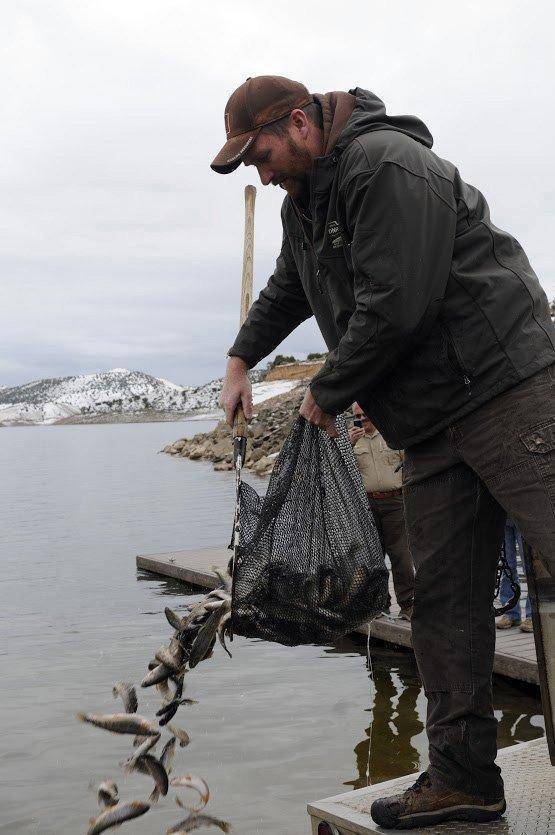DWR Press Release
Vernal – Those at the boat ramp at Red Fleet Reservoir were all smiles when the first fish hatchery truck drove down the ramp on Nov. 16. The truck released more than 3,800 Colorado River cutthroat trout into the reclaimed waters. The truck returned a few hours later with its second load of fish, another 5,000 cutthroat trout from the Whiterocks State Fish Hatchery.
“This is the fun part,” said Trina Hedrick, regional aquatics manager for the Utah Division of Wildlife Resources, as she took photos from the dock. “Returning life to the reservoir is definitely the fun part.”
Hedrick and the UDWR’s regional staff had been working for years to reach this day—years of planning, public meetings and completing the largest rotenone project in northeastern Utah in 25 years.
“It’s exciting,” Hedrick said. “The 8-inch cutts weren’t really on the list of species for the reservoir, but the cutts—and a few thousand rainbows that will be released later—were extras, held in our fish hatchery system just for Red Fleet. They will supply some early fishing opportunities as we wait for the other species to establish themselves.
Later in the week, the UDWR also stocked wipers into the reservoir. Wipers are one of the fish a committee of biologists and anglers selected for the reservoir.
In the spring, hatchery trucks are scheduled to bring to Red Fleet roughly 1 million sterile walleye fry, a load of fingerling wipers and a load or two of tiger trout. Also in the spring, the UDWR will begin moving mixed sizes of black crappie, yellow perch, mountain whitefish and fathead minnows to Red Fleet from other lakes.
Hedrick said the fathead minnows, which only grow to be about three inches long, will supply an early prey base for the sportfish in the reservoir. “We’ll have to restock them every few years,” she said. “Fatheads will give us a jump start, but they won’t survive long with so many top predators in the system.”
Hedrick said the crappie, yellow perch and whitefish should all reproduce in the reservoir. “As they become established,” she said, “they’ll join the other predators that feed on the fatheads. But they’ll also become a prey base for the larger predators. And they’ll provide fishing opportunities with faster catch rates than some of the other fish.”
Hedrick said she’s looking forward to seeing what happens over the next three to four years. “We’ll monitor the various fish species and will likely make some adjustments based on what we find,” she said. “We’ll also enhance some of the habitat to make the reservoir more suitable for growth and survival.
“Red Fleet is going to have a unique mix of fish, many of which are new to this part of northeastern Utah,” she said. “Hopefully, they can all establish themselves in the reservoir. This mix will produce some terrific fishing opportunities.”

